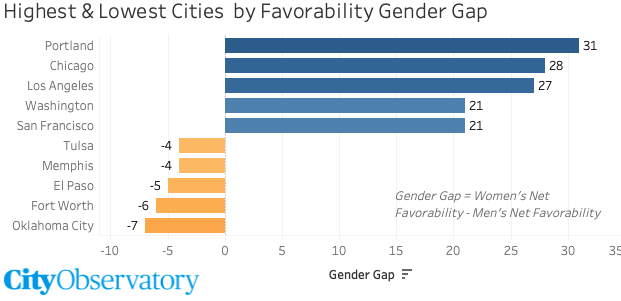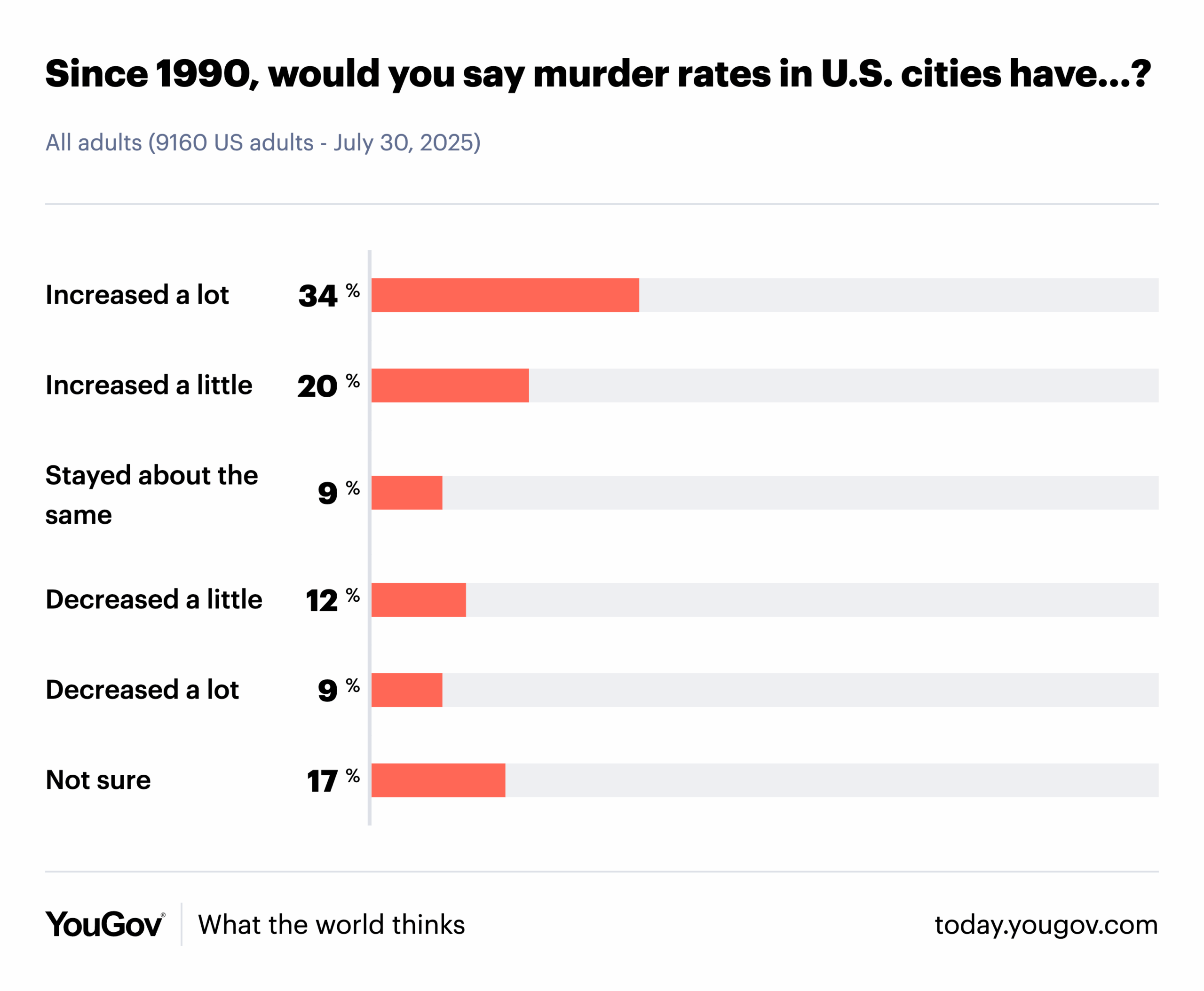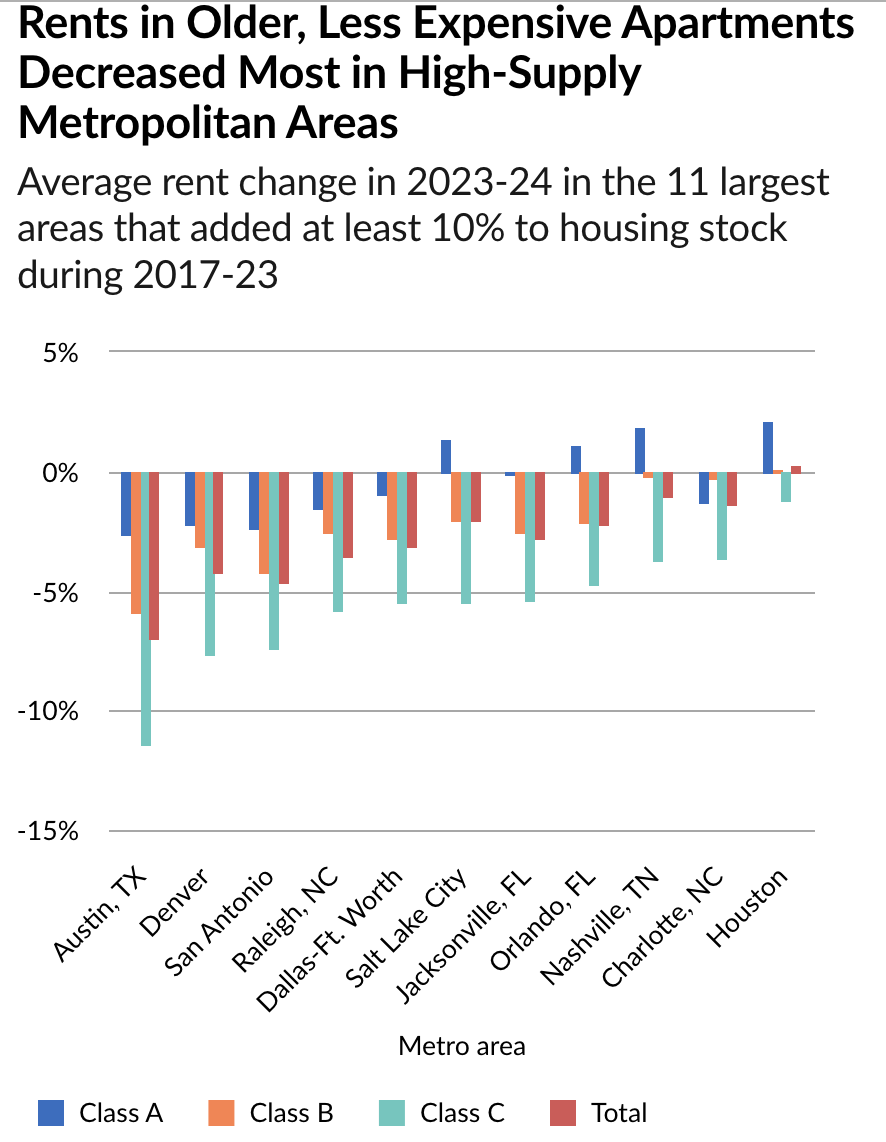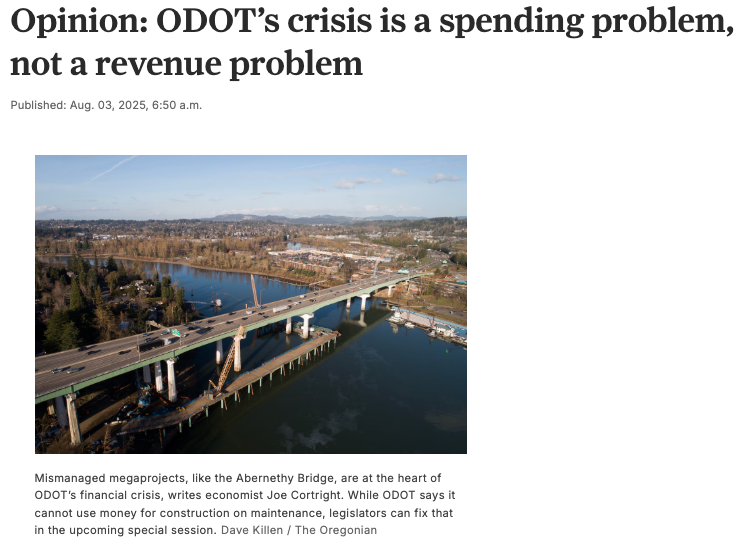What City Observatory Did This Week
The gender cap in perceptions of cities. A new YouGov survey of 2,000+ Americans reveals striking gender differences in how cities are perceived across the country. Women rate Portland a remarkable 31 percentage points higher than men—the largest gender gap among 50 major cities surveyed. Chicago, Los Angeles, and San Francisco also score significantly higher with women.
The geographic pattern is telling: West Coast cities consistently appeal more to women, while Southern cities—particularly in Texas and Oklahoma—resonate more with men. Every California city except Bakersfield rates higher with women; every Texas city except Houston favors men.
These perceptions largely come from Americans who’ve never actually visited these places—only New York City had been visited by a majority of respondents. The ratings reflect secondhand impressions from media coverage and word-of-mouth rather than lived experience.
The findings suggest our mental maps of American cities are deeply gendered, creating a cultural geography where women are metaphorically “from Portland” and men “from Oklahoma City.”
Must Read
America’s unshakeable belief in a non-existent trend in murder. File this under extreme cognitive dissonance. As we have always pointed out at City Observatory, the data shows decades of steady decreases in crime in US cities. By every measure, but especially by murder rates, crime is vastly lower now than it was in the 80s or 90s. Despite a blip in disorder and crime in the wake of the pandemic, crime rates are again continuing to decline, almost everywhere. But survey research shows most American’s steadfastly believe just the opposite.
A recent YouGov poll asked survey respondents whether, since 1990, the murder rate in US cities had increased a little or a lot, or had decreased, a little or a lot. A majority of Americans think the murder rate is up. Only about one in five know that murder rates are down substantially.
Here, for example, is a tabulation of the FBI data:
The truly scary thing about murder in the United States is the fearful and deeply wrong notion that we have that our cities have become more dangerous, when the reverse is actually true. It’s a sign of the times perhaps that belief has become so unmoored from facts.
Allston Freeway widening will likely be downsized due to loss of federal funding. In a project with many parallels to Portland’s I-5 Rose Quarter Freeway widening project, the cancellation of a large federal grant is likely to trigger major changes to the proposed project. The rebuilding of a portion of I-90 in Allston was awarded a $327 million Reconnecting Communities grant by the Biden Administration, but that funding was clawed back by the Big Beautiful Bill. Now, it appears that MassDOT will be forced to rethink the design of the freeway, and as local advocates say, hundreds of millions in expense could be saved if the project was down-sized from 8-lanes to 6-lanes. According to Streetsblog USA, the agency is already looking to downsize and reduce costs:
. . . including the action of hiring outside experts to perform an in-depth cost analysis and independent engineering analysis to examine how to deliver the most
transportation benefits with available resources. Our charge to the engineering consultant will be to maximize the transportation and other benefits within available resources,” MassDOT Director of Megaprojects Luisa Paiewonsky told stakeholders at an Allston Multimodal Project task force meeting Wednesday evening.
The strategic rethink of the project in light of the loss of federal funding that was nominally for “reconnecting communities” confirms suspicions that the real role of these federal funds was to enable state highway departments to pursue even larger projects, with more lanes, more traffic, and more pollution, rather than mitigating the negative environmental effects of freeways.
Massachusetts decision to use this loss of funding as an opportunity to ask basic questions is a a stark contrast to reaction of the Oregon Department of Transportation, which lost an even larger reconnecting communities grant (more than $400 million) for the I-5 Rose Quarter freeway widening. Rather than live within its means, ODOT appears to be trying to blunder forward with exactly the same bloated project–even though it now faces a $1.5 billion funding gap and is laying off agency employees–and isn’t giving any thought to how to shrink its oversized footprint and lower costs.
New Knowledge
Even more evidence that building more housing holds down rents. New research from the Pew Charitable Trusts looks at patterns of rental inflation within and across markets in the US, and finds, once again, that the key to keeping housing affordable and avoiding displacement is building more housing.
The authors looked at the metropolitan markets and zip codes that built the most housing over the period 2017 to 2024, and then looked to see how changes in housing supply correlated with changes in rent. Keep in mind this was a period in which rents increased substantially nationwide: between 2017 and 2024, rents rose an average of xx percent in the metro markets studied.
The following table focuses on rent changes in Metro areas with the largest increases in housing stock between 2017 and 2023.
Ten of these eleven markets saw a decline in rents in 2023-24; declines were greatest in so-called “class C” buildings: older, less well-maintained buildings often in poorer neighborhoods. The large declines in class C reflect the interconnection of housing markets: building new units (which are nearly always Class A, at least when completed, lessens the competition for Class B and Class C units, and helps push down (or hold down) their rents, and therefore reduces displacement.
As the authors explain:
In each metropolitan area, the steepest rent declines were for Class C apartments—those in older and less expensive buildings, as first observed by RealPage and Jay Parsons, an economist based in Dallas. (See Figure 2.) So even though most of the new apartments and condominiums built were not subsidized and may have had rents higher than low-income residents could afford, the new supply helped push rents down in older, less-expensive units by reducing the competition among those seeking homes that were no longer as scarce.
Importantly, the authors find the beneficial effects of new supply are apparent at both the neighborhood and regional level. The more new apartments that are built in a zip code (effectively a neighborhood) the lower the rent growth tends to be in that neighborhood. And while this effect holds for neighborhoods, the real traction on affordability is driven by metropolitan level supply. The author’s estimate that new construction has about four times as much positive impact on regional rents as on local rents.
New Housing Slows Rent Growth Most for Older, More Affordable Units, Pew Research Center, July 31, 2025, https://www.pew.org/en/research-and-analysis/articles/2025/07/31/new-housing-slows-rent-growth-most-for-older-more-affordable-units
ODOT “is basically your kitchen remodeler from hell,” said Joe Cortright, a Portland economist and vocal critic of the agency. “You hire somebody who says they’ll fix up your kitchen for a very attractive price, and they come in and they tear up your kitchen, and then they say it’s going to be two times or three times what they said it was.”
CityCast Portland featured City Observatory’s story on the gender divide in perceptions of US cities.





